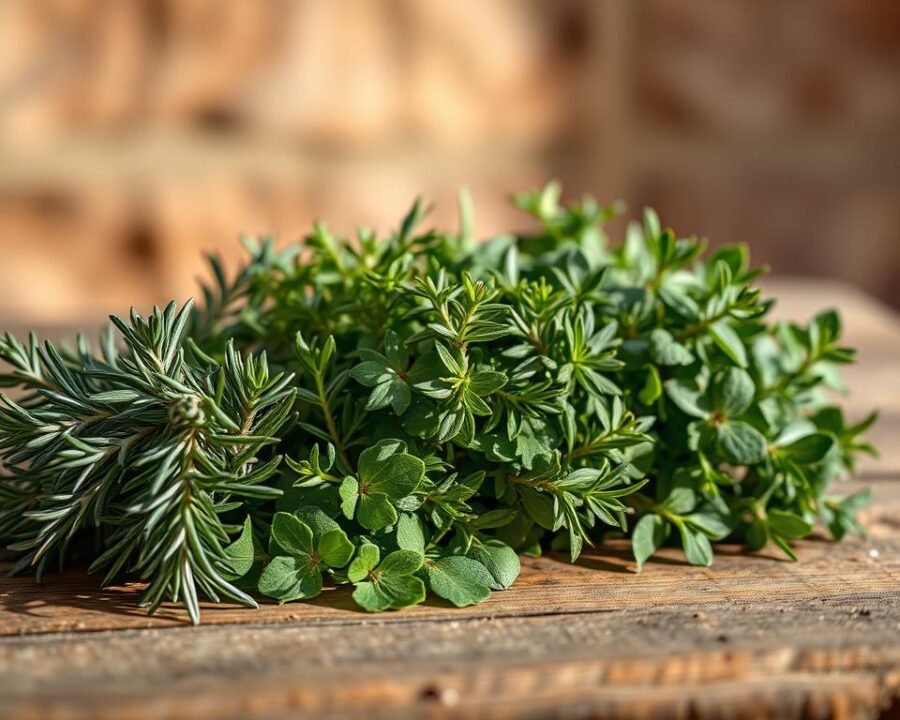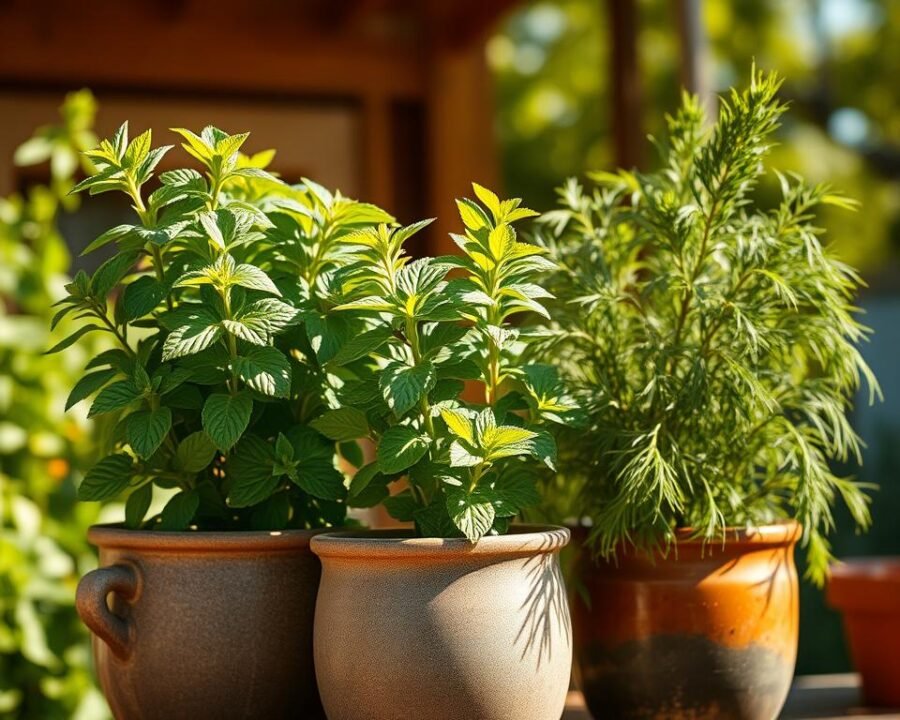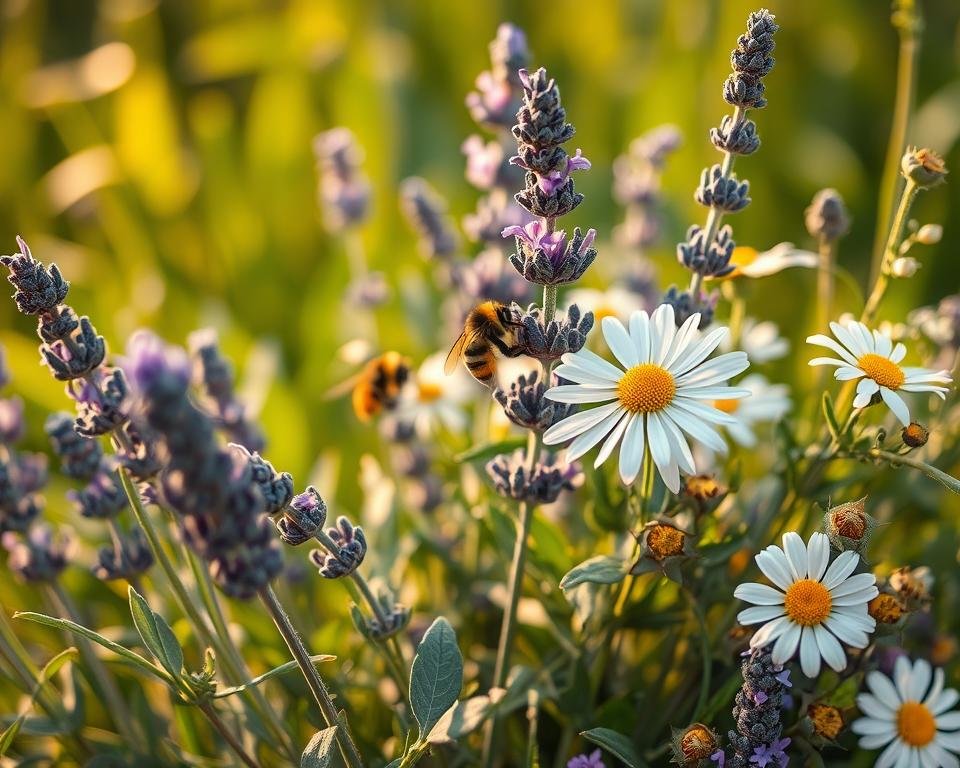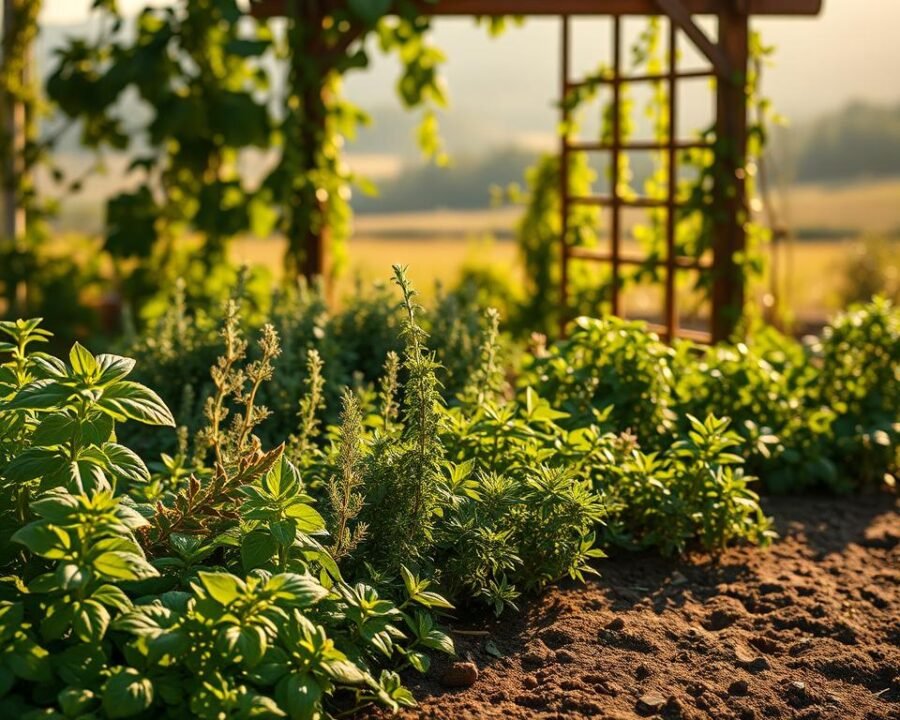There’s something magical about stepping outside and snipping fresh herbs for a meal. The aroma of basil, the sharpness of rosemary—each leaf brings flavor and life to our dishes. Whether you have a backyard or just a sunny windowsill, growing these greens is easier than you think.
We’ve gathered 15 must-have varieties, from classic parsley to vibrant cilantro. Many thrive in containers, making them perfect for urban spaces. With trusted advice from experts like Proven Winners and Janet Loughrey, even beginners can cultivate a thriving garden.
Beyond taste, these herbs offer health perks. Basil delivers vitamins, while sage packs antioxidants. Best of all? Most grow year-round, giving you fresh flavors in every season.
Key Takeaways
- Fresh herbs enhance meals with flavor and nutrition.
- Container-friendly options suit small spaces.
- Expert recommendations ensure gardening success.
- Many varieties provide year-round harvests.
- Health benefits include vitamins and antioxidants.
Why Grow Your Own Herb Garden?
Nothing beats the instant upgrade fresh herbs bring to everyday meals. A sprinkle of basil or rosemary elevates soups, salads, and stews effortlessly. Plus, nurturing them at home connects us to nature’s rhythms.
Fresh Flavors at Your Fingertips
Store-bought herbs often wilt within days. Homegrown varieties retain vibrant flavor and aroma. Snip leaves as needed—no more wasted plastic packs.
Rosemary’s piney notes or thyme’s earthiness taste richer when picked minutes before cooking. Even dried, home-harvested herbs outshine supermarket shelves.
Health and Wellness Benefits
Basil delivers 27% of your daily vitamin K per cup—surpassing supplements. Sage contains 150+ polyphenols, linked to brain health. These easy grow greens pack nutrients without extra effort.
Rosemary purifies indoor air while thriving in sun. Mint soothes digestion. Every plant offers dual perks: culinary and therapeutic.
Cost-Effective and Sustainable
A single $2 starter plant yields months of harvests. Compare that to $3–5 grocery packs used once. Over a year, growing your own saves $200+.
| Item | Store-Bought | Homegrown |
|---|---|---|
| Basil (per year) | $60 | $2 |
| Parsley (per year) | $50 | $2 |
| Plastic waste | 12+ packs | 0 |
Reduced packaging supports the planet. Share extras with family or freeze for winter. A small step toward sustainability starts in the kitchen.
Easy-to-Grow Herbs for Beginners
New to growing greens? These three herbs are foolproof. They adapt to pots, resist neglect, and reward with bold flavors. Perfect for spring planting or indoor setups.
Basil: The Versatile Favorite
Genovese basil stars in pesto, while Thai basil spices up stir-fries. Both need full sun (4–6 hours daily) and well-drained soil. Seeds sprout in 3 weeks—keep soil moist but not soggy.
Snip leaves from the top to encourage bushiness. Pro tip: Pinch off flowers to prolong leaf production.
Parsley: Mild and Multipurpose
Often mistaken as annual, parsley thrives for two years. Soak seeds overnight before planting to speed up germination. Its bright leaves jazz up salads, soups, and sauces.
Flat-leaf (Italian) parsley packs more flavor than curly types. Harvest outer stems first to let the center keep growing.
Chives: Perfect for Small Spaces
These onion-flavored greens fit in window boxes or teacup pots. Pink edible flowers add flair to dishes—great for Instagram snaps! Divide clumps every 3 years to prevent overcrowding.
Chives bounce back after cutting, making them a low-maintenance staple. Pair with eggs or baked potatoes for a fresh kick.
Best Herb Garden Plants You Need to Try for Cooking
Cooking transforms when fresh herbs meet heat—these varieties elevate every dish. Rosemary, thyme, and oregano add robust flavor to everything from grilled meats to summer salads. Each thrives in diverse conditions, making them staples for home chefs.

Rosemary: Robust and Aromatic
This woody perennial survives winters indoors, offering year-round harvests. Its pine-like aroma pairs perfectly with lemon for sheet-pan chicken or focaccia. For intense flavor, strip leaves just before cooking.
Rosemary prefers slightly alkaline soil (pH 6.0–7.0). Prune regularly to encourage bushiness. Pro tip: Use sprigs as skewers for grilled veggies.
Thyme: Earthy and Versatile
Tiny leaves pack a punch in stews, marinades, and even honey infusions. Bees love its delicate flowers, making it a pollinator magnet. English thyme works in most dishes, while lemon thyme brightens seafood.
Harvest by snipping stems in morning. Dry extras for winter—it retains 90% of its oils.
Oregano: Spicy and Essential
Greek oregano outshines Italian varieties with sharper heat. Its phytochemicals aid digestion, while roots prevent soil erosion. Sprinkle fresh leaves on pizza or blend into sauces for depth.
Grow in well-drained beds or containers. Avoid overwatering—this Mediterranean native thrives on neglect.
| Herb | pH Range | Key Use |
|---|---|---|
| Rosemary | 6.0–7.0 | Roasts, breads |
| Thyme | 6.0–7.5 | Soups, honey infusions |
| Oregano | 6.0–8.0 | Tomato sauces, meats |
Herbs That Thrive in Containers
Limited space? No problem—these herbs flourish in pots with minimal fuss. Whether on a fire escape or kitchen counter, they deliver vibrant flavors without needing ground. Just grab a container, soil, and sunlight—you’re set.

Mint: Vigorous and Refreshing
Mint’s crisp leaves elevate drinks, salads, and desserts. But beware: its roots spread aggressively. Always plant in a container to prevent takeover.
- Growth rates vary—spearmint grows faster than peppermint.
- Use a 5-gallon pot to give roots room.
- Trim often to encourage bushiness, even in winter.
Lemon Verbena: Citrusy and Fragrant
This lemon-scented star shines in teas and desserts. Its leaves also make a natural cleaner:
Steep 1 cup leaves in 2 cups vinegar for 2 weeks. Strain and dilute with water for a sparkling kitchen cleaner.
Prefers full sun and well-drained soil. Bring pots indoors before frost.
Dill: Light and Feathery
Dill’s wispy fronds are pickling essentials. It also attracts ladybugs—nature’s pest control.
| Type | Best For | Container Size |
|---|---|---|
| Bouquet | Pickling | 12″ deep |
| Fernleaf | Small spaces | 8″ wide |
Sow seeds directly in pots; transplanting harms its delicate roots.
Herbs for Pollinators and Garden Beauty
Bright blooms and buzzing bees transform any outdoor space into a lively sanctuary. Certain herbs pull double duty—they dazzle the eyes while feeding essential pollinators. From fragrant lavender to striking sage, these varieties bring color and ecological benefits.

Lavender: Calming and Colorful
With over 200 cultivars, lavender offers shades from pale lilac to deep violet. Its soothing scent repels clothes moths naturally. Bees adore its nectar-rich flowers, making it a summer garden staple.
This Mediterranean native thrives in well-drained soil and full sun. In humid regions, grow it in pots for better drainage. Harvest stems just as buds open for maximum fragrance.
Sage: Hardy and Ornamental
Beyond its culinary uses, sage dazzles with tri-colored leaves—purple, green, and gold. Its fuzzy foliage deters pests while attracting bees and hummingbirds. Studies suggest it may support heart health too.
Plant in sandy soil with afternoon shade in hot climates. Prune lightly after flowering to maintain shape. Pair with rosemary or thyme for a drought-tolerant display.
German Chamomile: Delicate and Useful
This dainty herb self-sows readily, creating charming drifts of white flowers. Its apple-like aroma makes a perfect bedtime tea, known to promote relaxation. Beneficial insects flock to its nectar-rich blooms.
Sow seeds directly in spring after frost. Thin seedlings to 8 inches apart for air circulation. Harvest flowers when fully open, ideally in morning.
Pollinator Garden Companions
- Anise hyssop (licorice scent)
- Bee balm (vibrant red blooms)
- Fennel (host plant for swallowtails)
For more pollinator-friendly herb ideas, explore our curated list. Most bloom June through August, creating a summer buffet for winged visitors.
Tips for Growing Herbs Successfully
Growing herbs successfully starts with understanding their basic needs. While each variety has unique preferences, most thrive under similar conditions. We’ll share expert-approved methods to boost your harvests year-round.
Sunlight and Soil Requirements
Mediterranean varieties like rosemary demand 6+ hours of daily sun. Leafy types (basil, mint) tolerate partial shade but produce more in full light. Always check plant tags for specific needs.
Test your soil pH before planting. Most herbs prefer slightly alkaline conditions (6.0-7.5). For containers, use well-draining mixes with perlite or sand. This prevents root rot in moisture-sensitive species.
Watering and Harvesting Techniques
The finger test never fails—insert a knuckle deep into the ground. Water only if dry. Overwatering kills more herbs than drought. Morning irrigation reduces evaporation and disease risks.
Harvest in morning when leaves contain peak oils. Use sharp scissors to avoid tearing stems. For continuous growth, never remove more than ⅓ of the plant at once.
Seasonal Care and Overwintering
In spring, divide crowded perennials like chives. This stimulates fresh growth. Start tender seeds indoors 6 weeks before last frost for early transplants.
Prepare for winter by moving pots to sheltered areas. Mulch in-ground plants with straw after first freeze. Rosemary benefits from anti-desiccant sprays in cold climates.
| Task | Spring | Fall |
|---|---|---|
| Fertilizing | Balanced organic feed | None |
| Pruning | Shape woody herbs | Remove dead growth |
| Propagation | Seed starting | Root divisions |
For container herbs, rotate pots weekly to ensure even light exposure. This prevents lopsided growth and strengthens stems against wind damage.
Conclusion
Growing fresh flavors at home is simpler than it seems. With 15 varieties to explore, each brings unique tastes and benefits. Start with basil, parsley, or chives—they’re forgiving for beginners.
Proven Winners’ starter plants offer a hassle-free way to begin. Their robust seedlings adapt quickly to pots or plots. Soon, you’ll enjoy homegrown flavors in every meal.
Ready for more? Our next guide dives into companion planting—pairing herbs with veggies for mutual benefits. Plus, grab our free growth journal to track your progress.
Whether snipping mint for tea or harvesting thyme for stews, these greens transform cooking. Small steps yield big rewards—one leaf at a time.
